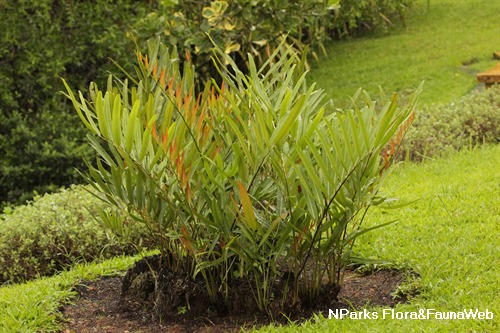
Back
Acrostichum aureum L.
| Family Name: | Pteridaceae |
| Common Name: | Leather Fern, Paku Laut, Mangrove Fern, Coarse Swamp Fern, Golden Leather Fern, Piai Raya, Larat, Piai, 卤蕨 |
Name
Classifications and Characteristics
| Plant Division | Ferns & Lycophytes (Non-Seed Vascular Plants) (Fern) |
|---|---|
| Plant Growth Form | Herbaceous Plant |
| Lifespan (in Singapore) | Perennial |
| Mode of Nutrition | Autotrophic |
| Plant Shape | Fountain (Palm-like) |
| Maximum Height | 1 m to 3 m |
Biogeography
| Native Distribution | Tropical Africa (The Gambia, Ghana, Guinea-Bissau, Guinea, Ivory Coast, Libreia, Nigeria, Senegal, Sieerra Leone, Cameroon, Congo, Equatorial Guinea, Gabon, Gulf of Guinea Islands, Kenya, Tanzania, Angola, Mozambique, Zambia, Zimbabwe, Cape Provinces, KwaZulu-Natal), Western Indian Ocean (Comoros, Mauritius, Madagascar, Réunion), Saudi Arabia, South-Central China, Hainan, Southeastern China, Nansei-shoto, Taiwan, Bangladesh, India, Sri Lanka, Andaman Islands, Nicobar Islands, Cambodia, Laos, Myanmar, Vietnam, Thailand, Peninsular Malaysia, Singapore, Lesser Sunda Islands, Philippines, Sulawesi, Bismarck Archipelago, New Guinea, Solomon Islands, Northern Australia, Pacific Islands, Southern North America (Florida), Mexico, Belize, Costa Rica, Central America Pacific Islands, Guatemala, Honduras, Nicaragua, Panama, Caribbean Islands, French Guiana, Guyana, Suriname, Venezuela, Colombia, Ecuador, Galápagos, Peru, Brazil. |
|---|---|
| Native Habitat | Aquatic (Brackish Pond / Lake / River), Shoreline (Mangrove Forest) |
| Preferred Climate Zone | Tropical, Sub-Tropical / Monsoonal |
| Local Conservation Status | Native to Singapore (Least Concern (LC)) |
Description and Ethnobotany
| Growth Form | It is a mangrove fern, growing up to 3 m tall, and thrives well under full sun. The stem (rhizome) of this species is stout, erect, and covered with relatively large scales that are about 4 by 1.8 cm. |
|---|---|
| Foliage | Dark green, erect fronds are composed of 24 - 30 pinnae (leaflet-like structure) in alternate arrangement (1 - 4 m long, 0.12 - 0.5 m wide). The petiole of the frond (known as the stipe) is usually about 1 m long. The 5 - 8 pairs of pinnae near the tip are fertile with their underside covered in reddish brown sporangia (except the midrib), while the remaining pinnae are infertile. The pinnae are oblong with a blunt tip (8 - 50 cm long, 1 - 7 cm wide) and bright red when immature. |
| Stems | Fibrous rhizomes (underground, horizontal stems) have a scaly surface. |
| Reproductive Parts - non-flowering plant | The pinnae which bear the sporangia are restricted to the upper parts of a frond at varying proportions. The sporangia and the sterile hairs (paraphyses) among them will cover the whole lower surface of the pinnae, giving it a dark brown appearance. Its spores are dispersed by wind. |
| Habitat | Occurs mostly in brackish, sometimes in freshwater, swamps, marshes and tidal forests. In mangroves, often found within inland regions. |
| Similar | The pinnae of Acrostichum aureum have blunt tips, while those of Acrostichum speciosum have pointed tips. |
| Associated Fauna | Typically colonizes mud lobster mounds which are more elevated and less likely to be flooded. |
| Cultivation | It can be propagated using its spores or by division. |
| Etymology | Greek akros, top; Greek stichos, order, referring to the lines on the lower surface of the leaves; Latin aureum, golden yellow, referring to the golden hue of the younger leaflets |
| Ethnobotanical Uses | Edible Plant Parts : Edible Leaves Food (Fruit or Vegetable): The young leaves are consumed as a vegetable. Medicinal: Fronds are shredded or crushed and applied as a poultice on wounds, boils or ulcers. In India, the fronds are used to treat snake bites. Others: In Vietnam, the dried fronds are used as material for roofing. |
Landscaping Features
| Landscaping | It is suitable as a marsh plant for the edges of ponds or waterlogged areas. |
|---|---|
| Desirable Plant Features | Ornamental Foliage |
| Landscape Uses | Parks & Gardens, Riverine, Pond / Lake / River, Marsh / Bog |
| Thematic Landscaping | Marsh Garden |
Fauna, Pollination and Dispersal
| Seed or Spore Dispersal | Abiotic |
|---|
Plant Care and Propagation
| Light Preference | Semi-Shade, Full Sun |
|---|---|
| Water Preference | Lots of Water |
| Plant Growth Rate | Fast to Moderate |
| Rootzone Tolerance | Waterlogged Soils (Drains Site), Easy to Grow |
| Transplanting Tolerance | Good |
| Maintenance Requirements | Low |
| Propagation Method | Spore, Division |
Foliar
| Foliage Retention | Evergreen |
|---|---|
| Mature Foliage Colour(s) | Green |
| Mature Foliage Texture(s) | Leathery |
| Prominent Young Flush Colour(s) | Orange |
| Foliar Type | Compound |
| Foliar Attachment to Stem | Petiolate |
| Foliar Shape(s) | Non-Palm Foliage (Lanceolate) |
| Foliar Margin | Entire |
| Foliar Apex - Tip | Mucronate |
| Foliar Base | Rounded / Obtuse |
References
| References | Yong J, Tan PY, Nor Hafiz Hassan, Tan SN. 2010. A Selection of Plants for Greening of Waterways and Waterbodies in the Tropics. Singapore: Chung Printing . 480 pp. |
|---|
Image Repository
Others
| Master ID | 239 |
|---|---|
| Species ID | 1535 |
| Flora Disclaimer | The information in this website has been compiled from reliable sources, such as reference works on medicinal plants. It is not a substitute for medical advice or treatment and NParks does not purport to provide any medical advice. Readers should always consult his/her physician before using or consuming a plant for medicinal purposes. |

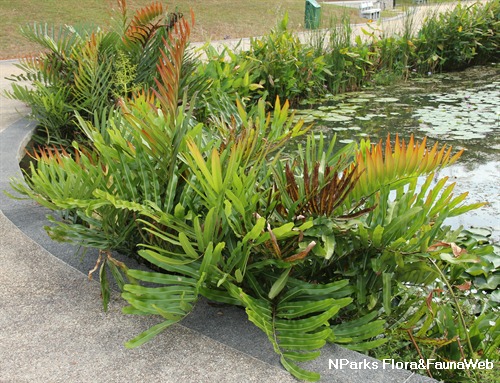

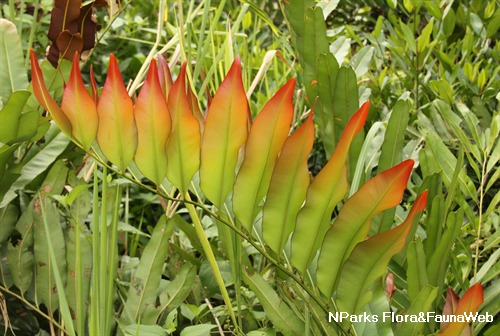

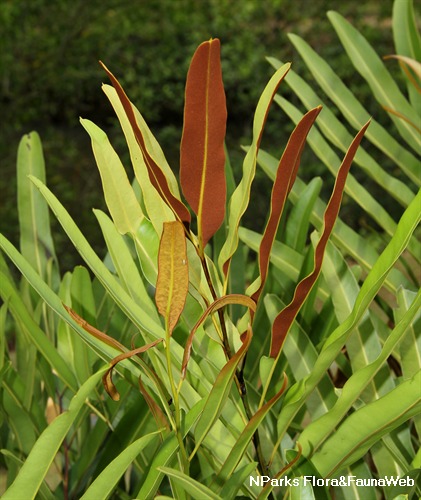
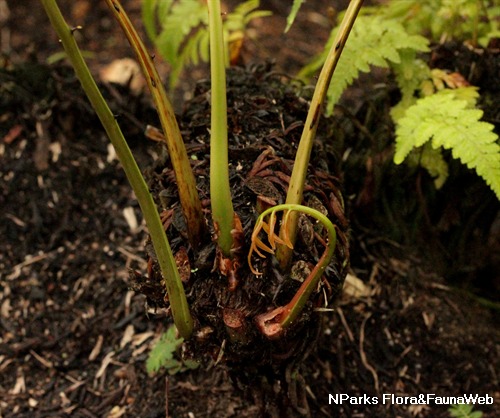

.jpg)
